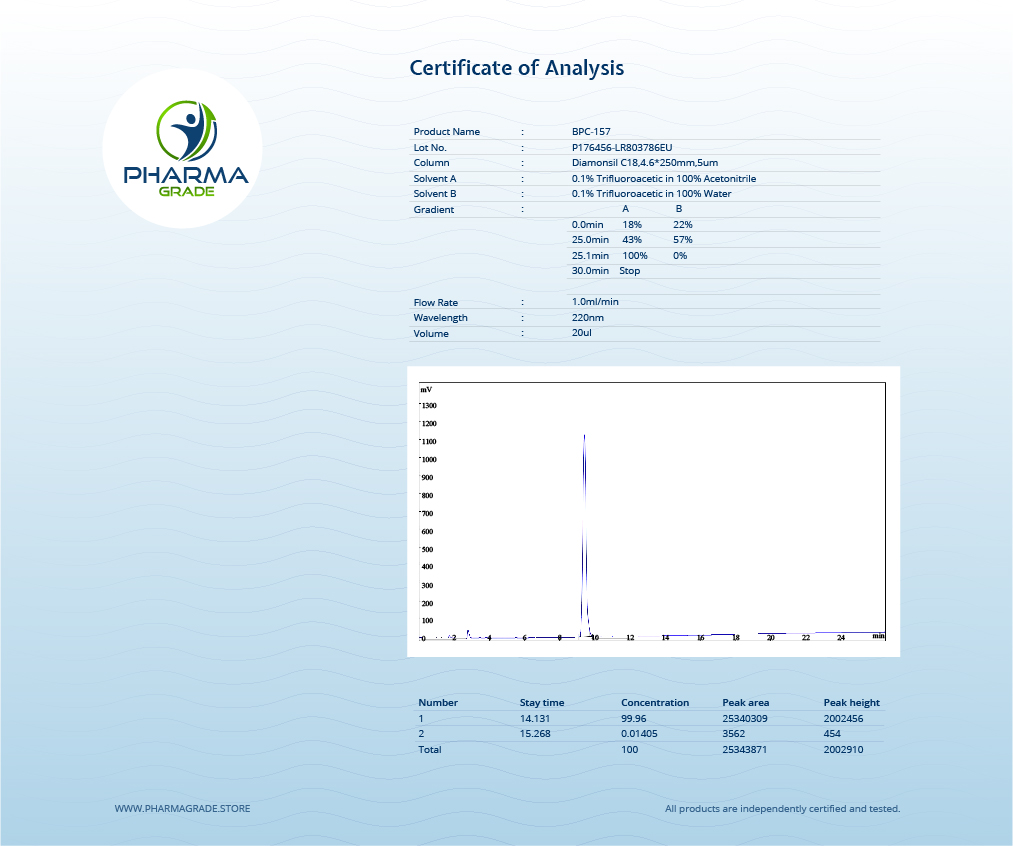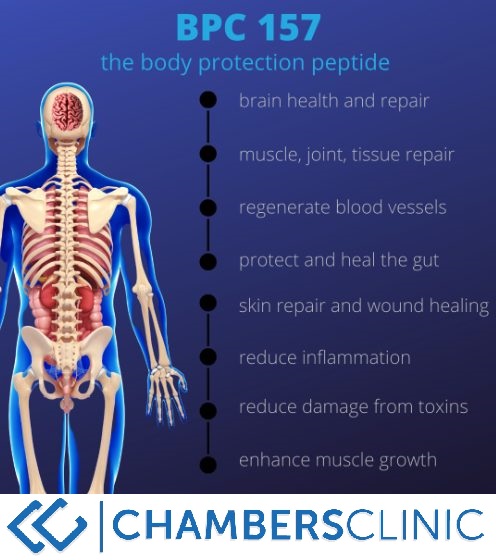
August 16, 2024
Bpc 157 And Capillary Bentham Science
Bpc 157 And Capillary Bentham Scientific Research Getting the peptide from trustworthy resources is necessary to ensure its purity and traceability. Monitoring for any kind of uncommon reactions during the program of BPC-157 treatment makes it possible for timely recognition and monitoring of any unanticipated negative effects. Motivate communication with a medical professional allows for prompt modifications to the therapy method if necessary. When considering BPC-157 for restorative use, utilizing a careful and informed method is extremely important. Users need to adhere to advised dosages developed with extensive research to safeguard versus potential damaging results. Assessment with a doctor is crucial prior to initiating a routine including BPC-157.Clarifying The Bpc 157 Ban: Therapeutic Potential Vs Fda's Position
Consequently, we observed that this beneficial effect, after direct injury (permanent ligation) related to 1 or 2 major vessels, might instantaneously oppose more basic damage (conserved intra-abdominal hypertension, either high (grade III) or extremely high (grade IV)), as all blood vessels which can be compressed with enhanced intra-abdominal pressure. Therefore, a "bypassing vital," i.e., an activated azygos vein as a saving path, preventing both the lung and liver and likewise kept in mind in Budd-- Chiari disorder (i.e., suprahepatic occlusion of the substandard caval blood vessel) (Gojkovic et al., 2020), integrates the substandard caval vein and exceptional caval capillary via straight blood distribution. Hence, turned on azygos capillary shunt can restructure blood circulation and promptly undermine the effects of kept high intra-abdominal stress, both peripherally and centrally. With the used procedure (i.e., 25, 30, 40, or 50 mmHg intra-abdominal high blood pressure), there was a regular downhill chain of events, regardless of the kind of anesthetic (i.e., esketamine, as ketamine is an antioxidant (Xingwei et al., 2014) that may offer a more prolonged survival period than thiopental). The stomach wall conformity threshold was crossed mechanically, without additional stretch of the abdominal area; this enhanced intra-abdominal stress, compressed vessels and body organs, and raised the diaphragm as a fixed definitive outcome (Depauw et al., 2019).BPC-157 and TB-500: Inflammation, Tissue Damage, and More - The Portugal News
BPC-157 and TB-500: Inflammation, Tissue Damage, and More.
Posted: Tue, 19 Sep 2023 07:00:00 GMT [source]
Unveiling The Enigma Of Bpc-157 And Its Origins
We suggest that stomach compartment syndrome (Depauw et al., 2019) is a multiple occlusion disorder. Approximately six-week-old You can find out more SD rats evaluating around 220 g were bought from Beijing Vital River Lab Pet Technology Co., Ltd . The rats were kept in an animal space with a cool barrier system at an ambient temperature level of 25 ° C ± 2 ° C, relative moisture of 50% ± 10%, and a 12 h light/dark cycle. Ten-to-twelve-month-old beagle pets evaluating between 9.8 and 12.8 kg were bought from YaDong Speculative Pet Research Centre, Nanjing, China. The canines were increased in an open feeding ranch under problems including all-natural light. The animals were provided with ad libitum access to tidy alcohol consumption water and a standard pellet diet regimen. After BPC-157 treatment, the transcriptional prices of FOS, JUN, and EGR-1 in mitogenic pathway were upregulated by 4.99, 7.05, and 3.70 folds up, respectively. For that reason, we hypothesized that BPC-157 is associated with the activation of MAPK signal pathway. To review the effect of BPC-157 on intracellular signal transduction, the phosphorylation degree of ERK1/2, JNK, and p38 MAPK were analyzed in HUVECs. We demonstrated that the phosphorylation level of ERK1/2 could be modulated by BPC-157. Nonetheless, no substantial adjustment of p-JNK and p-p38 healthy protein degree was observed in BPC-157-treated HUVECs. Typically, high intra-abdominal stress were prompt together with the nodal rhythm, with dominant ST-elevation and bradycardia.- We recommend that stomach compartment syndrome (Depauw et al., 2019) is a numerous occlusion disorder.
- Via a number of mechanisms, BPC 157 has shown its capability to boost outgrowth and fibroblast proliferation, producing clinical results in healing tendons, ligaments, and muscular tissues.
- Based upon existing human studies, BPC-157 can be safely used for four weeks complied with by a two-week break.
- Previously, we demonstrated that BPC 157 keeps sphincter feature (lower esophageal, pyloric [17,18,20-23], urethral [24], and student [25].
- Together, digestive anastomosis [10-14] and fistulas [15-20] recovery, esophagitis and gastric lesion healing, alongside with rescued sphincter feature [10,11,17,18,20-25] can definitely improve the feasible curative peptides therapy for rat esophagogastric anastomosis.
Does BPC 157 go across the blood-brain obstacle?
As necessary, local serotonin synthesis in the rat brain, evaluated by α& #x 3b1;-methyl-l-tryptophan autoradiographic dimensions revealed that, BPC 157 provided peripherally may readily go across the blood & #x 2013; brain barrier, impact region-specific mind 5-HT synthesis in rats leading to dramatically enhanced synthesis in the ...


Social Links